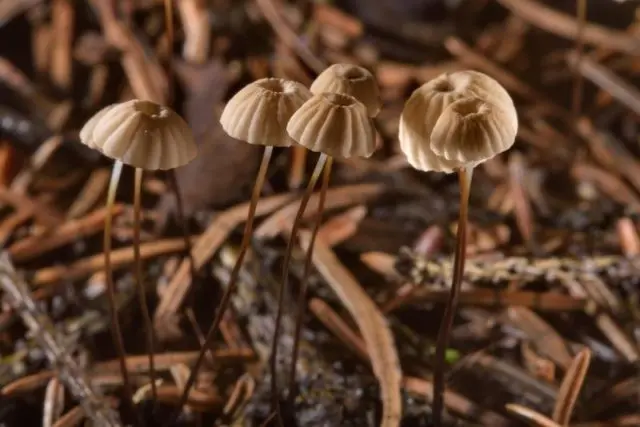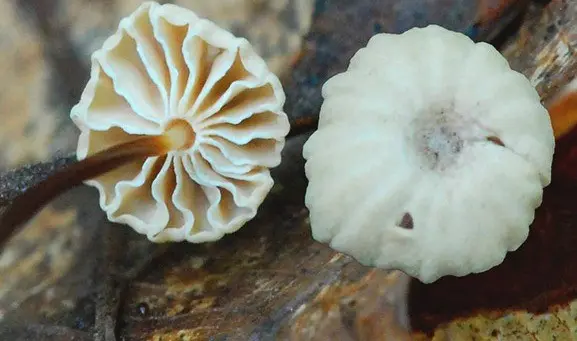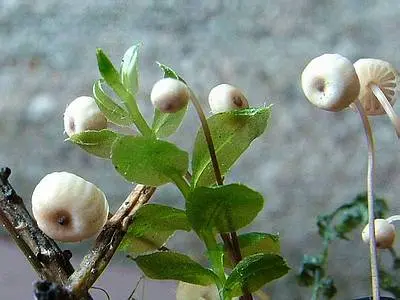Contents
The most tender negniyuchnik belongs to the Negniyuchnikov family. Mushrooms of this species are quite small in size, each specimen consists of a cap and a thin leg. During the dry period, the fruit body almost completely dries out, but does not die. Not used for food.

Mushroom growing in the vicinity of St. Petersburg
What does the most tender negniyunik look like
Going into the forest, you need to understand well which mushrooms can be taken for cooking, and which ones should be treated with caution. It is important to consider what features this variety of fruiting bodies has in order to distinguish them from other gifts of the forest.
Cap Description
The body of the cap is very thin, diameter 2,5-7 mm. At the beginning of growth, it is hemispherical (hemispherical). As it matures, the hat straightens. The edges are folded-wavy whitish in color, eventually becoming beige and even brownish. At the top there is a small depression with a tubercle of a brownish hue.
The plates are white, attached to an inconspicuous collar.
Spores are cylindrical or elliptical, colorless, smooth.

A group of young members of this species
Description of the leg
The leg is rather thin, 2-6 mm long, hairy. It looks shiny, black-brown in color.
Where and how to grow
The most tender negniyuchnik grows abundantly in coniferous and mixed forests on fallen needles. Most often it can be found in spruce needles, less often on fir. It rarely grows on pine needles.
Is the mushroom edible or not?
Due to its extremely small size, it is classified as inedible. It has no nutritional value for humans.
It is believed that the most tender non-rotten does not contain toxic substances in its composition. However, it is not used in cooking.
Twins and their differences
This representative is similar to other specimens of the Negniuchnikov family. Twins include the following types:
- Wheel-shaped negniyuchnik. The main difference between this representative and related varieties is a pronounced wheel-shaped collar located in the upper part of the leg. Does not apply to poisonous species. Due to its modest size and lack of nutritional value, it is not used in cooking.

- Bullyar. There is a characteristic tubercle at the top of the cap with a dark center. The stem is white above, darkening towards the bottom. The plates are the same color as the hat. Edibility is unknown. There is no nutritional value. Of no interest to mushroom pickers.

Conclusion
The most tender negniyuchnik is distinguished by its unattractive appearance. It is quite small in size, the cap is whitish, darkens with time. The lower part is dark, very thin. It grows in spruce and mixed forests, mainly in fallen spruce needles. There are several doppelgangers. It has no practical food use, therefore it is classified as an inedible variety.











